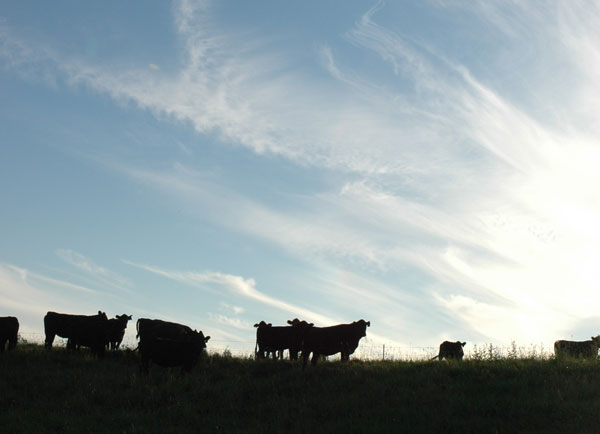Manage the whole of your ranching operation
When one aspect of your management changes, everything changes.
April 3, 2019

This title deserves a little defining. Other words (nouns) that provide some meaning are: total, entity, entirety, totality, everything and ensemble.
When speaking of managing a ranch, we should think of managing the “whole” or every aspect of it and recognize that, when we change any part, that part is integrally linked to and affects the whole. Not only that, but each part affects and is affected by the others.
Most of our formal education conditions us to be linear thinkers—change this and you can expect that result. More recently we have been introduced to “systems thinking” which helps us begin to understand that there is not simply a single result from each action or change in our management. And, in addition to those initial results or effects, there are “compounding and cascading” (terminology borrowed from Dr. Allen Williams) effects that continue on after the first effects.
In complex systems or “wholes,” we need to learn to anticipate as many of the effects as possible before making changes in any part. Good decisions in areas like grazing management and animal breeding can initiate a cascade of good events that will compound well into the future. Bad decisions can do just the opposite.
In managing our farms and ranches, we must manage four areas: production; economics/finance; marketing and; people. Each of these can be divided into sub-areas; but all interact and become part of the same “whole” or system which is our ranching business.
In reality, the whole of our ranching business extends to our community and business and social relationships. Managing people is not so much about being a good “boss.” It’s more about building and managing relationships both inside and outside of the business that will improve our profitability, enhance our reputation, help us gather managerial information, and allow us to contribute to the community and create friendships.
As Dave Pratt has so often pointed out, there are three ways to improve profit: increase turnover, reduce overheads and improve gross margin. Everything you will propose for profit improvement will fit under one or more of these.
If you do something that will increase turnover and improve gross margin, it may also require an increase in overheads; so be careful in your analysis. You can’t just look at one and ignore the others.
For as long as I have written this column, I have talked about “Five Essentials for Successful Ranch Management.” These are attitudes and processes for “managing the whole” to improve profitability along with resource health and productivity:
Our approach to management must be both integrative and holistic.
Always strive for continuous improvement of the key resources—land, livestock and people.
Acquire and use good tools for analysis and decision making.
We must wage war on cost.
We should place an emphasis on marketing.
If you and your team can get good at each of these “essentials,” you will be profitable unless you begin with an impossible debt load. In which case, you must first take care of the debt.
There are several major determinants of profit:
Enterprise mix and choice
Overheads (people, their tools and equipment plus land and things attached to it—buildings, facilities, etc.)
Stocking rate
Cow size and milking ability
Grazing management to improve soil health
Fed feed vs. grazed feed
Calving season
Realized herd fertility—conception and subsequent survivability
Wise input use for optimum production. Be careful. Optimum is always less than maximum—sometimes considerably less.
Marketing
I have written about each of these—how they can be managed and how they affect profitability. It is important to recognize that there is much interconnectedness between them. They can have an effect on each other and then collectively on the “whole.”
We must remember that we are most concerned about whole ranch profit and not about profit per animal. Profit per cow can be highly distortive of whole ranch profit or profit per acre.
A systems thinking perspective leads us to conclude that we should reduce overheads, market well and improve three key ratios:
Acres per cow.
Cows per person.
Fed feed vs. grazed feed.
I hope that you can see how these ratios are linked to the determinants of profit and see what economic power they have. As one example, if you could reduce the acres per cow by one half, you would essentially reduce the overhead costs per cow by one half without changing the total overheads. Striving for continuous improvement of land leads us to good grazing management which can greatly increase the stocking rate or reduce acres per cow.
So, for profitable decision making and managing ranch resources, become a “systems thinker.”
Teichert, a consultant on strategic planning for ranches, retired in 2010 as vice president and general manager of AgReserves, Inc. He resides in Orem, Utah. Contact him at [email protected].
About the Author(s)
You May Also Like



